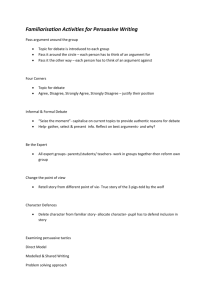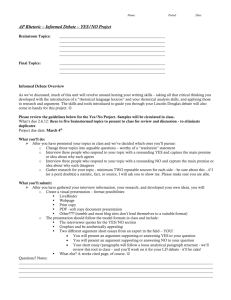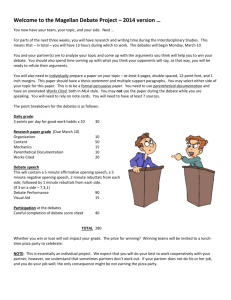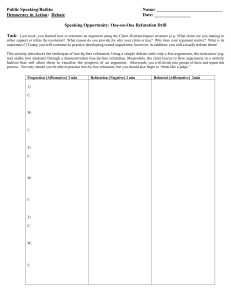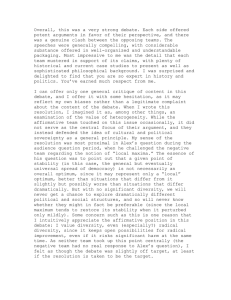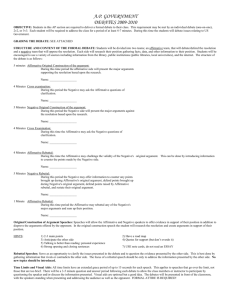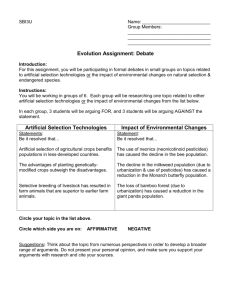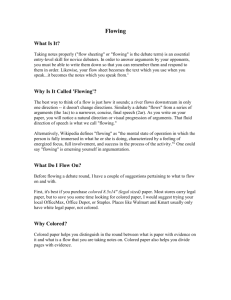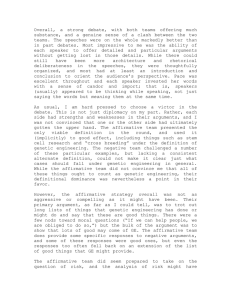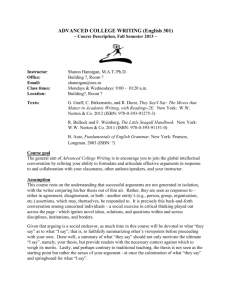Miscellaneous Debate Drills - Saint Louis Urban Debate League
advertisement
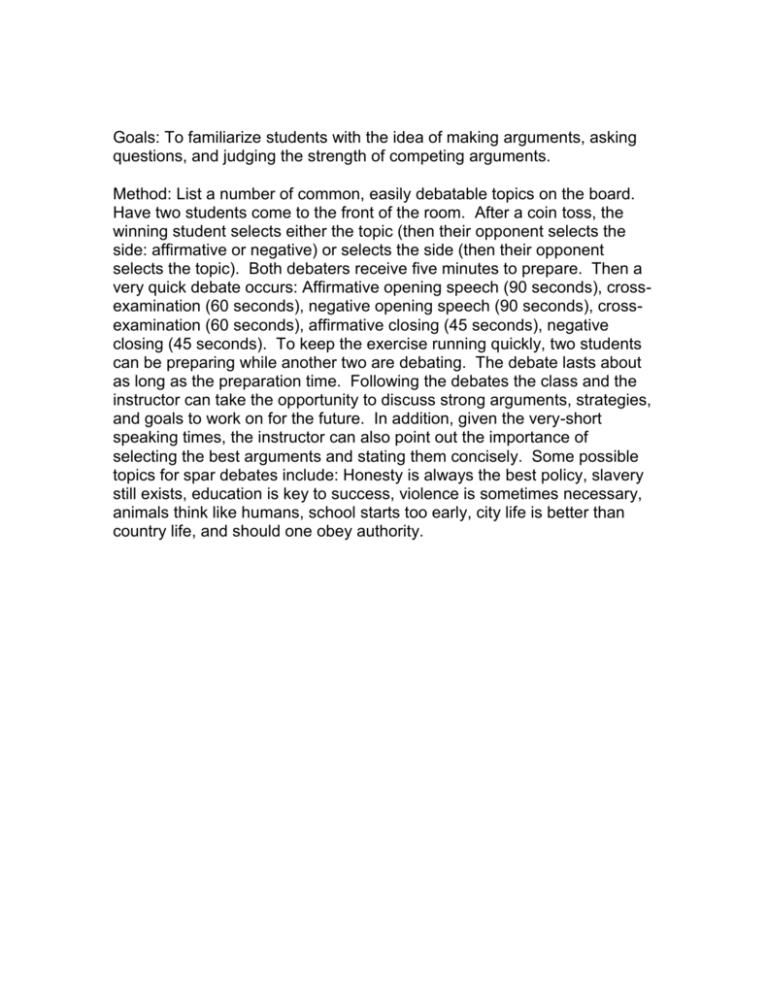
Goals: To familiarize students with the idea of making arguments, asking questions, and judging the strength of competing arguments. Method: List a number of common, easily debatable topics on the board. Have two students come to the front of the room. After a coin toss, the winning student selects either the topic (then their opponent selects the side: affirmative or negative) or selects the side (then their opponent selects the topic). Both debaters receive five minutes to prepare. Then a very quick debate occurs: Affirmative opening speech (90 seconds), crossexamination (60 seconds), negative opening speech (90 seconds), crossexamination (60 seconds), affirmative closing (45 seconds), negative closing (45 seconds). To keep the exercise running quickly, two students can be preparing while another two are debating. The debate lasts about as long as the preparation time. Following the debates the class and the instructor can take the opportunity to discuss strong arguments, strategies, and goals to work on for the future. In addition, given the very-short speaking times, the instructor can also point out the importance of selecting the best arguments and stating them concisely. Some possible topics for spar debates include: Honesty is always the best policy, slavery still exists, education is key to success, violence is sometimes necessary, animals think like humans, school starts too early, city life is better than country life, and should one obey authority. Goals: To acquaint students with the use of dictionaries as a means of clarifying the debate. Method: If you have access to several dictionaries, pick one resolution and challenge the students to find as many different definitions as possible. Have students present their definitions to the class and give 'awards' for several categories: most reasonable, most unexpected but still reasonable, most distorted, most useless, etcetera. The instructor may also want to stage a mini-debate on definitions by having two students argue over which definition is more reasonable. The goal in such a debate would be to emphasize that students should give brief, clear reasons why their definition would lead to better debate, and to emphasize that such a definitional dispute would never characterize an entire debate, but may characterize a moment in a debate. Goals: To provide students with a way to practice flowing and learn about current events at the same time. Method: Have students take notes on the evening news (television or radio) just as they would flow a debate. Each story is noted as a new numbered argument. The student tries to write down 1. a title for the story (e.g., 'U.S.A. finally pays its UN dues') 2. Some salient facts about the story (e.g., $6.5 billion was owed, etc.) and 3. Any people who were quoted in the story (e.g., Madeline Albright). This simple exercise provide very realistic practice on a daily basis, and the current events which the student learns will be quite useful in debates as well. Goals: To develop skills in quick thinking, to understand refutation and extention. Method: Students stand in a circle, you throw a ball to one. Ther person who catches the ball makes an argument (you can limit the subject, or leave it open) and throws the ball to another person. The person who catches the ball must either 1.) Refute the argument (give reasons why it isn t true), or 2.) Extend the argument (providing new and different reasons why it is true). The game continues. If a player is uncertain how to answer, or if you have stayed too long on one issue, then there is another option: 3.) Make a new argument on a different issue. Goals: To emphasize skills in refutation, as well as rebuttal. Method: Have each student write on the top of a piece of paper one position which they are willing to defend. Pass all of the papers around the room and have each person list a reason against that argument as quickly as possible. When all papers are returned to the original students, give them 10 minutes to prepare responses to the arguments which have been written against their own original argument. Students are encouraged to group similar answers together and answer them at once. Finally, the instructor has each student refute as many arguments to their position as they can in 5 minutes.
